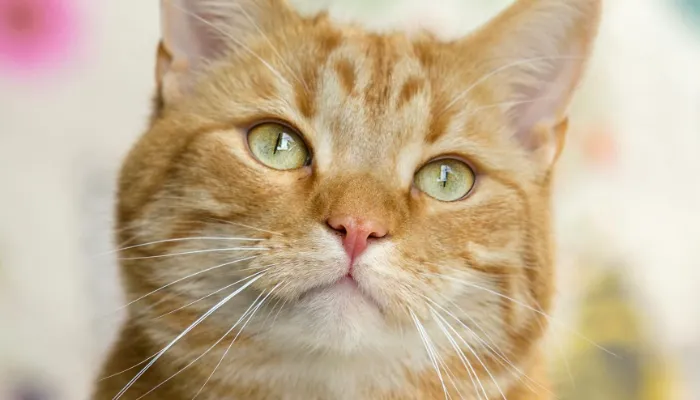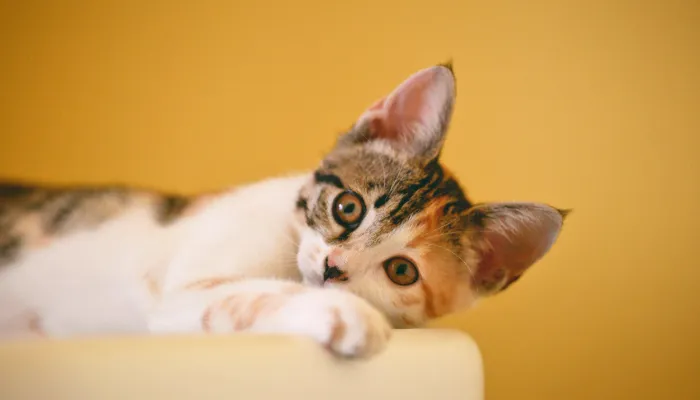English to Cat Translator is a fun tool to help humans and cats communicate better. To many pet owners, understanding a cat’s meows, purrs, and even its body language can be puzzling. Cats may not speak our language, but they have a specialized system of vocal utterances and gestures.
From mobile applications to soundboards, the cat translator strives to morph human linguistics into a form suitable for cats. But do they really work? This guide will show you more about what science knows about cat communication, sound, frequency and how English to Cat Translators Function.

English to Cat Translator: Brief Overview
Have you ever desired being able to talk to your cat? For many pet owners, the meowing, purring, and tail-flicking of their feline counterparts can be a mystery. An English to cat translator claims to assist in this entire process, allowing humans to communicate with their cats on a different level.
But how feasible is this idea? Let’s dive into the surprising world of cats and discover how they communicate and are purportedly understood.
Can Humans and Cats Understand Each Other?
It is safe to say that cats and humans lack a shared means of communication, but that doesn’t mean cats don’t possess their own unique methods in expressing their needs, feelings, and intentions. Knowing their vocal and physical behavior can help the pet owner strengthen his or her bond with the pet.
How Cats Share Their Feelings
Communication among cats consists not only of vocal expression but also physical movements. Here are some of the primary ways they “talk”:
- Verbal Exchanges
- Purring – Often indicates satisfaction, but can also show discomfort.
- Meowing – Used solely to communicate with humans, messages have varying tones and lengths.
- Hissing & Growling – When apprehensive or aggressive, these serve as warning signs.
- Chirping & Trilling – When Cats are excited or to grab your attention.
- Body Movements
- Tail Position – A friendly cat raises its tail while a frightened cat will have its tail puffed up
- Ear Movements – Excitement is expressed with ears lifted vertically, but aggression is signaled by ears in a horizontal position
- Slow Blinking – Showing love and trust towards another creature
- Arched Back – Defenses up when in a fearful state or being playful when feeling excited
| Cat Behavior | Meaning |
|---|---|
| Rubbing against | Embracing you and claiming their territory |
| Kneading with paws | Trying to derive comfort from an early stage in life |
| Rapid tail flicking | Feeling annoyed |
| Belly exposed | Sign of trust but not a sign of willingness to be handled |
The Science Behind Cat and Human Interaction
Studies have indicated that cats tend to alter their sounds when they are in contact with humans.
In contrast to their ancestors, pets form a “language” with their owners which is unique to each individual. This comes about due to specific behaviors over time.
- Research shows that felines shift the tone and volume of their “meows” in order to capture the attention of their owners.
- Every cat has their own particular lexicon, so no single language of cats exists.
- This is the reason the English to cat translator might yield different results on different pets.
Knowing the signs your cat gives is one effective way to strengthen the communication between you and your pet. These cat language translator devices are amusing devices, but they are far too unreliable to rely on to translate the true meaning of what your cat is trying to say.

How Does English to Cat Translator Work?
Understanding how an English to cat language translator online works requires insight into sound frequencies, feline behavior, and AI-driven analysis. While no tool can provide a perfect word-for-word translation, modern technology helps bridge the communication gap between humans and their feline companions.
Role of Sound and Frequency
Unlike dogs or birds, cats have the unique ability of vocal communication, which allows them to speak through different sounds.
- Cats respond most easily to sounds that have a high pitch, like a mother cat calling her kittens.
- Cats recognize tones and patterns, which allow them to differentiate between various frequencies, although they fail to process human words like dogs do.
- In cat language, low frequencies usually mean anger or are used as a warning sign.
| Sound Frequency (Hz) | Common Feline Reaction |
|---|---|
| 200-500 Hz | Comfortable, familiar, human speech range |
| 700-1000 Hz | Mimics mother cat’s calls, attracts attention |
| 4000+ Hz | High-alert, potential distress or annoyance |
Technology Behind English to Cat Translators
What most of people are unaware, is the fact that many of these English to cat language translator online utilize the latest technology features like AI to convert human sounds to cat-like sounds. The unique selling point is that most of the toy are made, in contrast to other toys in the market.
Here’s how they generally function:
1. Speech-to-Sound Conversion
- The tool captures the user’s speech and captures tone, loudness, and speech rates.
- AI algorithms associates each human utterance with an existing set of feline utterances.
- Playback is done with the added intelligent filter which tunes the output to a range which cats enjoy the most.
2. Pattern Recognition in Cat Vocalizations
- Some apps seek to interpret cat meows by recognizing recurring themes in pitch and tone.
- This class of systems classify naus based on feeling (hungry, satisfied, pain).
- Information as feedback makes it better for Machine Learning algorithms in the future.
3. Playback and Response Measurement
- Owners serve the clock cat an audio version of the meow, in the app context.
- The application saves the reaction of the cat, thus improving the accuracy of deciphered sounds.
- Eventually, the cycle of making a cat respond and translating it creates iterative refinement of the outputs.
| Feature | How It Works | Effectiveness |
|---|---|---|
| Cat Friendly Frequency Adjustments | Shifts human talk to be understandable by cats | Medium |
| Cutting Edge Learning Algorithms | Decodes cat meows into what they might be trying to say | High (but varies per cat) |
| Recordings of Cats | Outputs the dainty pre-recorded kitty meows | Low to Medium |
English to Cat Translators use algorithms that determine frequency sound ranges, pattern recognition to derive meanings, and voice databases to facilitate interactions with cats.
While these English to cat language translator online might not provide an exact translation, they certainly help in clarifying cat talk in an interesting manner which can enhance bonding between humans and cats.
Common Cat Sounds and Their Meanings
Cats are vocal animals and produce different sounds to convey different messages. Learning how to interpret these sound will help improve how you interact with your cat along with the English to cat translator. Here’s an overview of common cat sounds and what they usually mean.
Meows: The Language of Domesticated Cats
Unlike other species of cats, domestic cats meow as a form of communication with people. Pets can be defined as domestic animals that have been trained to complement human beings. Whatever the reason, we all love hearing our pets make different sounds. Different kinds of meows include:
- Short, high-pitched meow – “squeaky” a friendly “hello”
- Repeated meows – “squeaky” pet saying ”I am very excited, please pay attention to me”
- Low-pitched, drawn-out meow – Cat saying “why am I still hungary?”
- Loud, yowling meow – very sick cat, erderly cat calling or confused cat
Purring: More Than Just Happiness
Another sound that a cat produces is purring. It is not often easy to tell when a cat is happy, but when it is purring, you can almost certainly assume they are. However, here too, there are more conditions under which cats produce the purring sound, including:
| Purring Situation | Possible Meaning |
|---|---|
| When injured or unwell | Trying to heal or find a comfortable place to rest |
| When being stroked | Laying down and very relaxed |
| Around other cats or people | Social cooperation and trust can be seen. |
| In high-stress scenarios | An attempt at self-harm or to signal upset. |
Hissing and Growling: Signs to Look For
Cats tend to hiss and growl as a response to feeling threatened or fearful. These sounds tend to fend away danger.
- Hissing – A sign that a cat is frightened or feels trapped.
- Growling – Dull and aggressive sound that indicates discomfort.
- Spitting – Verbalization of anger in cats, which is made forcefully during a fight.
Chirping and Trilling: A sign of attention/ excitement
Cats usually chirp or trill in these scenarios:
- To timid birds or potential prey – Displays excitement or irritation when a cat is behind a window and watching birds.
- During kittening – A method of vocal communication during guiding or nurturing between mother cat and kittens.
- Towards people – Some cats trill when they desire to be pet or cuddled.
Using a combination of meows, purrs, hisses, and sharp chirps, cats express their feelings and needs. You can listen carefully to the tone, pitch, and context of these sounds and know what your cat friend is trying to tell you. Interacting and observing your cat more and more will make your communication with it better when using the English to cat translator!

Guide To Using an English to Cat Translator
Do you often find yourself contemplating what goes through your cat’s mind? Or fantasize about being able to “speak” your cat’s language? A cat meow translator will provide you with solutions in bridging the gap between you and your pet.
Whether it’s an app you are using or English to cat language translator online, knowing how to turn your words it into cat-friendly speech will enhance the relationship you have with your cat.
1. Select The Correct English To Cat Translator
There are many English to cat language translator online, from soundboards that imitate cat sounds to mobile apps and even online platforms. Among the various options, some of them are famous for a reason such as:
- MeowTalk – An app created to understand and copy cat cries with the support of AI.
- Human-to-Cat Translator – A tool that helps in talking with cats using pre-recorded sounds.
- Talking Pet Apps – Provides a feature to record your voice and alter it to speak in cat’s language.
Choose the English to cat translator that you think is the best option for you and make sure it is user friendly.
2. Learn Cat Sounds
Recognizing common cat vocalizations is essential, especially before getting a translator:
- Meows – Can be a signal requesting food, attention, or saying hello.
- Purring – Indicates satisfaction but can also be used when anxious.
- Making These Sounds – Suggests fright, rage or unease
- Making These Sounds – Suggests Fury, Rage, or Displeasure
- Chirping & Trilling – Enthusiasm or Energy
It’s possible that Mimic may assist reproduce these sounds, but paying attention to your cat’s physical movements is equally important to note.
3 Add Your Recommendations In The Translator
Here’s what you do when you have chosen an English to cat translator tool:
Through Cellphone Application
- Launch the app and make a note of anything you would like to say by either typing out the phrase or choosing it from a preset list.
- The application will change the words inputted into meowing sounds or cat sounds.
- Let the sound play for your cat then check their reaction.
Using Soundboards Or Pre Recorded Cat Sounds
- Pick a clip from the soundboard, such as a happy and friendly meow, or a cheerful young voice saying hello.
- Adjust the volume to low and let your cat hear it without shock.
- Look out for signs. How does your cat respond? Are they curious and meowing back or did they just approach?
4 Take Note Of Your Cat After Playing The Sound
So, after a few minutes of your cat hearing the sounds, check how the cat acts towards it:
- Should the cat choose to walk to you instead, it only means that the sound may get their interest.
- When they meow, they may soothe them.
- They also allow them to be all around them without having to display any signs of annoyance.
Not every cat will respond promptly, however, patience as well as repeated efforts can aid in reaching your desired outcome.
5. Pair Actions and Words with Body Language
Most cats will depend on non-verbal signals, therefore, combining utterances with consistent movements captures their attention instantly.
- When speaking their name, use a soft tone so that they respond positively.
- After some light hearted play with your cat, try to slowly blink at them. This looks like a cat way of saying “I love you.”
- Avoid jerky movements as cats tend to get frightened easily.
6. Practice and Try New Things
It is indeed difficult to learn how to speak cat translator, but with time, patience, and practice, you would be able to in no time. For starters, try these suggestions:
- Repeat specific sounds and observe closely whether your cat responds in any way.
- Throw in some meows accompanied with actions like playing by yelling out a “food meow” when it is time for a meal.
- Use different sound volume– some cats respond best to louder calls while for others, softer tones work.
Your attempts at communicating with your feline friend can only improve with time!
An English to Cat Translator can help bridge the gap between you and your pet. These cat translator apps and tricks are not perfect but help you get the gist of what your cat is trying to convey with its vocalizations. With careful attention, patience, and active listening to the device, you will be able to deal with your feline for sure!
Conclusion
You and your pet are sure to have fun with the English to Cat Translator. Uniting technology and nature gives pet owners a good chance to observe the changes in their cats’ voices and movements. It may not give perfect translations, but it sure provides useful hints. In any case, it strengthens the relationship between the owner and the cat. Cats are notoriously independent creatures, but using AI powered apps or imitating feline noises, the bond pet parents have with their cats becomes stronger.
